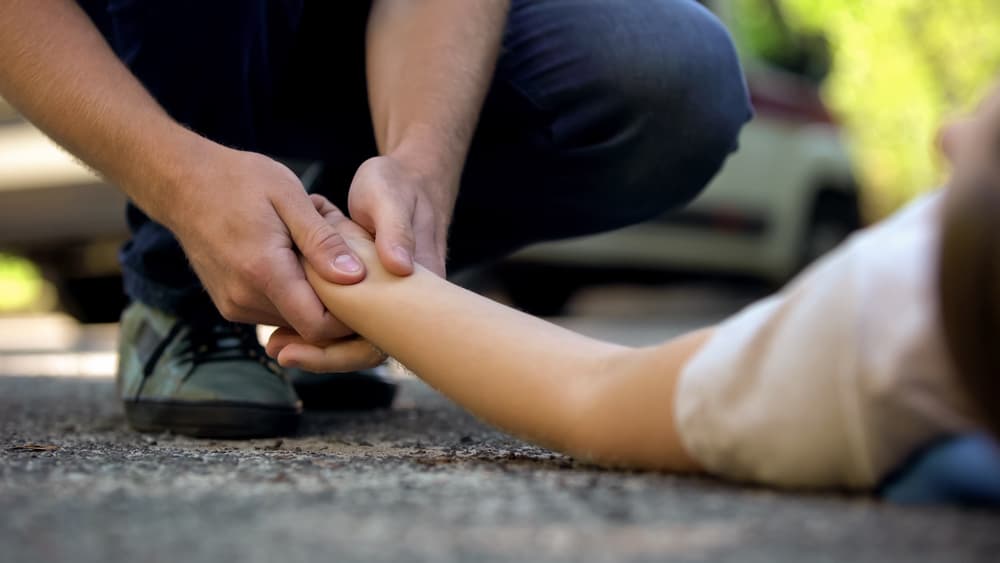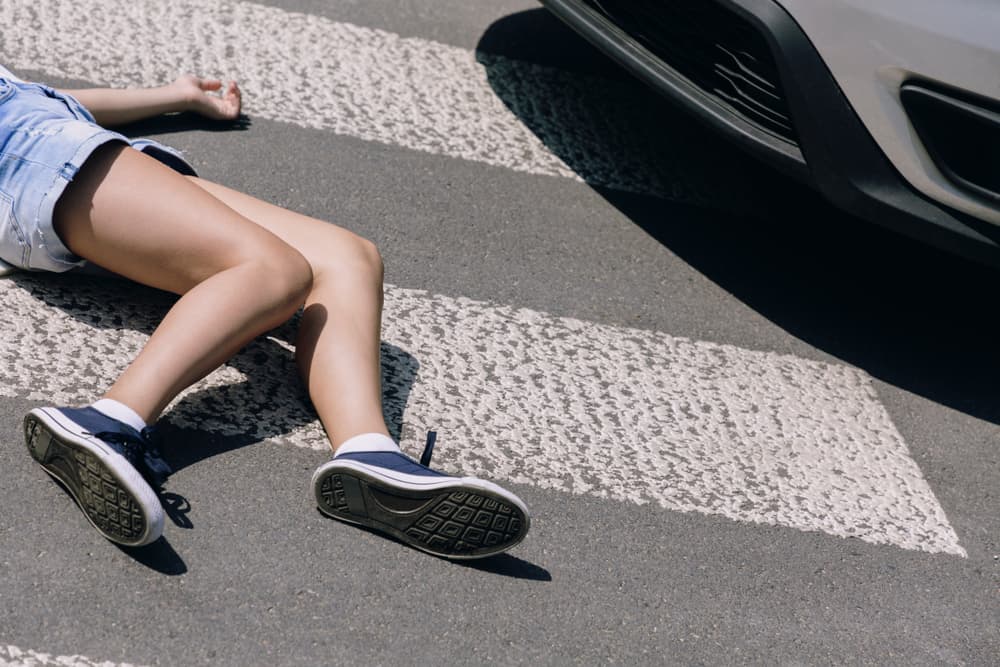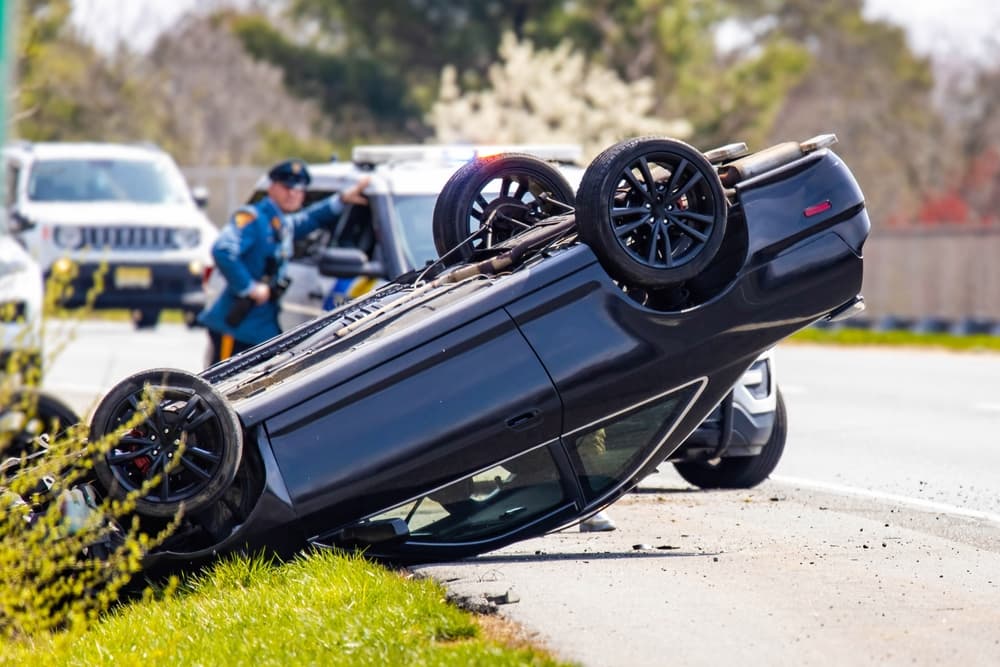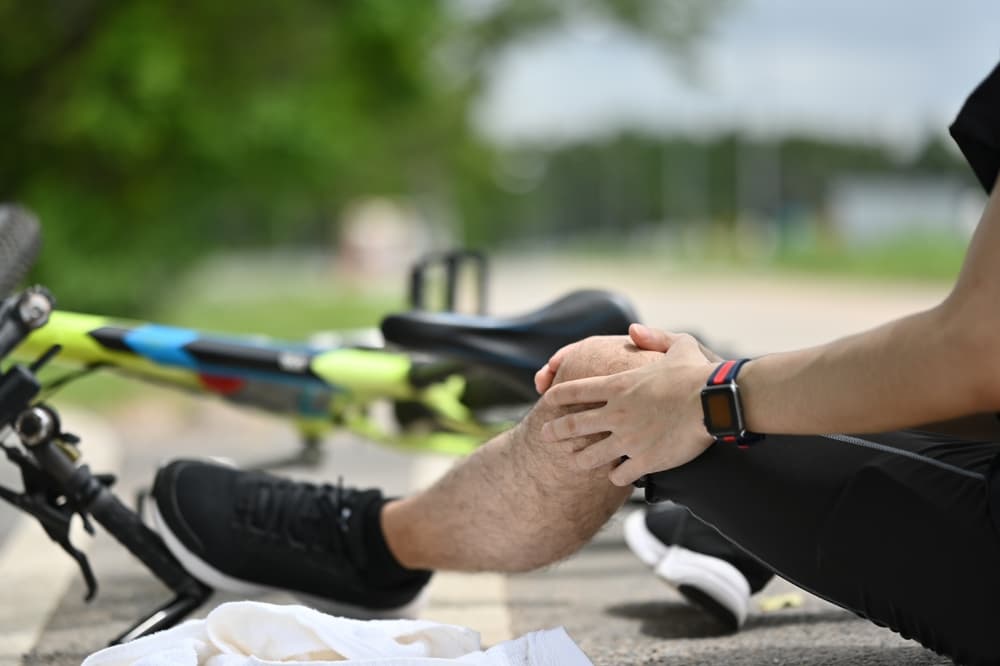Pedestrian accidents typically happen when motor vehicle operators become distracted or otherwise drive in a negligent manner. However, insurance companies frequently try to blame pedestrians for accidents as a way to limit their exposure and undervalue cases.
If you sustained injuries in a recent pedestrian collision, an experienced pedestrian accident lawyer can fight the insurance company for you, handle every step of the claim, or pursue litigation in the court system on your behalf.
Schedule a Free Initial Consultation Today!
How Do Negligent Drivers Cause Pedestrian Accidents?
Negligent drivers can cause pedestrian accidents through various reckless behaviors and lapses in attention. One major factor is speeding. When drivers exceed the posted speed limit, they reduce their ability to stop quickly and react to unexpected situations. This is particularly dangerous in areas with high foot traffic, such as crosswalks or residential streets, where pedestrians may be crossing the road.
Distracted driving is another significant problem. Drivers who use their phones, eat, or engage in other distractions are not fully focused on the road. This lack of attention means they are less likely to notice pedestrians who are crossing or standing at the side of the road, leading to serious accidents.
Driving under the influence of alcohol or drugs also impairs a driver’s judgment and reaction time. Impaired drivers may fail to see pedestrians or misjudge their speed and distance, increasing the likelihood of a collision. This impairment can significantly alter how a driver perceives and responds to the environment around them.
Ignoring traffic signals and signs is also a common cause of pedestrian accidents. For example, running a red light or failing to yield to pedestrians at crosswalks can result in dangerous situations where pedestrians are hit – simply because drivers are not following the rules meant to protect themselves and others.
Reckless driving behaviors, such as tailgating or aggressive lane changes, further contribute to pedestrian accidents. Drivers who tailgate are less able to react to stops or movements by pedestrians, while aggressive lane changes can result in drivers veering off course and hitting pedestrians.
Lastly, poor road conditions and vehicle maintenance can play a role in pedestrian accidents. If a driver’s vehicle has defective brakes or worn-out tires, they may be unable to stop in time to avoid hitting a pedestrian. Similarly, road conditions like potholes or poorly marked crosswalks can contribute to accidents by causing drivers to lose control or miss pedestrian crossings.
Frequent Injuries in Pedestrian Collisions
Victims of pedestrian accidents can suffer a range of serious injuries, given their unprotected position compared to vehicle occupants. Some of the most common injuries include fractures, head injuries, and internal injuries.
- Bone fractures are frequent in pedestrian accidents. Broken bones can occur in various parts of the body, including the legs, arms, and pelvis. Treatment often involves immobilizing the affected area with casts or splints and sometimes requires surgery to realign the bones and stabilize them with plates or screws.
- Head injuries are also common in pedestrian collisions and can be severe. These include concussions or more serious traumatic brain injuries (TBIs). Treatment for head injuries can involve rest and medication, while severe cases may require hospitalization, surgery to relieve pressure on the brain, and long-term rehabilitation to address cognitive or motor deficits.
- In addition to fractures and head injuries, internal injuries can occur in pedestrian accidents. These injuries affect organs like the liver, spleen, or kidneys, and they may not be immediately visible. Internal bleeding or damage can be life-threatening and often requires urgent medical attention. Treatment typically involves surgery to repair damaged organs and control bleeding, followed by intensive monitoring and possibly additional surgeries or therapies.
- Soft tissue injuries, such as bruises, sprains, and strains, are also common. These injuries can cause significant pain and swelling and often require rest, ice, compression, and elevation (the R.I.C.E. method). Severe soft tissue injuries may need physical therapy to restore strength and mobility.
For all types of injuries, physical therapy and rehabilitation play an essential role in recovery. This therapy helps patients regain their strength, flexibility, and mobility, which may be affected in the accident. In some cases, psychological counseling is also important, as pedestrians may experience emotional trauma or post-traumatic stress disorder (PTSD) from the accident.
Ways that Insurance Companies Wrongfully Blame Pedestrians for an Accident
Insurance companies often try to shift blame onto pedestrians to minimize their financial liability in accident claims. This tactic can be frustrating and damaging for victims. Here are some common ways insurance companies wrongfully blame pedestrians for causing an accident:
- Faulty Assumptions – Insurance adjusters may make assumptions that pedestrians are at fault based on stereotypes or biases. For example, they may assume that a pedestrian who was crossing the street is automatically to blame, even if the driver was speeding or distracted and actually caused the accident.
- Misinterpreting Evidence – Insurance companies may interpret evidence in a way that favors the driver. They may exaggerate the pedestrian’s role by suggesting that any movement from the pedestrian was a cause of the accident, even when the driver was clearly at fault.
- Blaming Pedestrians for Unpredictable Behavior – Pedestrians are sometimes blamed for not following “expected” behavior, such as by “suddenly” crossing the street. Insurance companies may argue that the pedestrian’s actions were unreasonable without considering the driver’s responsibility to watch out for all road users.
- Disregarding the Driver’s Negligence – Insurance companies may downplay or ignore the driver’s negligence. For instance, if a driver was speeding, running a red light, or driving under the influence, these facts may be minimized in favor of unreasonably placing blame on the pedestrian’s behavior.
- Using Witness Statements Selectively – Witness statements are sometimes manipulated in order to shift blame. Insurance companies may focus on statements that suggest the pedestrian was at fault while ignoring or dismissing statements that support the pedestrian’s right-of-way or highlight the driver’s misconduct.
- Cherry-Picking Surveillance Footage – When surveillance footage is available, insurance companies may only use parts of it in order to argue the pedestrian’s fault. For example, they may focus on the moment a pedestrian stepped into the street, neglecting to show that the driver was behaving recklessly under the circumstances.
- Leaning on Legal Technicalities – Insurance companies may also use legal technicalities to try and shift blame onto pedestrians, such as suggesting that a pedestrian was partially at fault – even when the driver’s actions were the actual cause of the accident.
Pedestrians have the right to walk safely, and insurance companies should not unfairly shift blame onto them. An experienced pedestrian accident lawyer in your area can fight the insurance company on your behalf and pursue the full compensation you deserve in your pedestrian accident claim or lawsuit.
Ways that a Lawyer Can Help You in a Pedestrian Accident Case
A pedestrian accident attorney can be a valuable ally in handling your third-party claim or lawsuit. Here are the most important ways they can help you throughout the process:
- Gathering Evidence – One of the key roles of a pedestrian accident attorney is to collect and organize evidence to support your case. This includes obtaining police reports, medical records, and witness statements. They may also gather photos of the accident scene and your injuries. This evidence is essential for proving the driver’s negligence and the extent of your damages.
- Dealing with Insurance Companies – Insurance companies can be difficult to deal with, often trying to minimize their payouts. An attorney can handle all communications with the insurance company on your behalf, ensuring that your rights are protected. They can also negotiate on your behalf to pursue a fair settlement that covers your medical expenses, lost income, and other damages.
- Calculating Damages – Determining how much compensation you are entitled to recover can be complicated. An experienced personal injury lawyer helps calculate both economic and non-economic damages, such as medical bills, lost income, pain and suffering, and emotional distress. They also use their experience to ensure that all potential damages are accounted for in your claim or lawsuit.
- Building a Strong Case – An attorney uses their legal knowledge and skills to build a strong case against the negligent driver. This involves establishing the driver’s fault, demonstrating the link between their negligence and your injuries, and presenting compelling evidence to support your claim. They also prepare legal documents and manage deadlines throughout the process.
- Providing Legal Advice – Understanding the legal process and your rights can be challenging. A pedestrian accident attorney offers valuable advice on the best course of action. They explain your legal options, help you understand the implications of various decisions, and guide you through each step of the claim or lawsuit.
- Representing You in Court – If your case goes to court, your attorney will represent you before a judge and jury. They will present evidence, make legal arguments, and advocate for your rights. Their courtroom experience can significantly affect the outcome of your case.
- Handling Negotiations and Settlements – Often, pedestrian accident cases are resolved through settlements rather than going to trial. Your attorney can negotiate with the at-fault driver’s insurance company to reach a fair settlement that compensates you for your injuries and losses.
Overall, a pedestrian accident attorney provides strong legal knowledge, support, and advocacy throughout your claim or lawsuit, aiming to ensure that you receive the compensation and justice you deserve.
How Much is a Pedestrian Accident Case Worth?
The value of a third-party pedestrian accident claim or lawsuit can vary widely based on several factors, including the severity of your injuries, the effects on your life, and the extent of your accident-related pain and suffering. Understanding the types of available compensation can help gauge what your claim may be worth.
- Related Medical Costs – This includes all costs related to treating your injuries from the pedestrian accident. It encompasses hospital bills, surgery costs, medication, physical therapy, and any future medical treatments or procedures. If your injuries require ongoing care or rehabilitation, these future expenses can also be included as part of your claim.
- Lost Earnings – If the accident caused you to miss time away from work, you can claim compensation for the earnings you lost. This includes both past lost income and any potential future earnings (if your injuries affect your ability to work long-term or permanently).
- Pain and Suffering – This form of compensation addresses the physical pain and emotional distress that directly results from the pedestrian accident. It is more subjective than economic damages and can be challenging to quantify. Factors considered include the severity of your pain, the effects on your daily life, and the duration of your suffering.
- Emotional Distress – Beyond physical pain, you may also experience significant emotional distress, such as anxiety, depression, or post-traumatic stress disorder (PTSD). Compensation for emotional distress aims to address these mental health effects – and the overall effect on your quality of life.
- Loss of Life Enjoyment – If your injuries have limited your ability to engage in activities or hobbies you previously enjoyed, you may be entitled to receive compensation for your loss. This type of damage considers how your lifestyle has changed due to the accident.
- Property Damage – If personal property, like clothing or other items, was damaged in the pedestrian accident, you can seek compensation for the repair or replacement of these items.
Courts or insurance companies will typically use various methods to calculate damages, often including past and future economic losses, as well as non-economic damages like pain and suffering.
An experienced pedestrian accident attorney in your area can provide a clearer picture of the potential value of your claim. They can assess your damages, gather necessary evidence, and advocate on your behalf to ensure that you receive fair compensation for your losses.
Contact an Experienced Pedestrian Accident Lawyer about Your Legal Options Today
If you sustained injuries in a recent pedestrian accident that a negligent driver caused, an experienced personal injury attorney can handle every step of the process for you, from investigating the accident circumstances to challenging the insurance company to litigating your case in the state court system. Your attorney will do everything possible to maximize your overall compensation award so that you become whole again after your accident.







